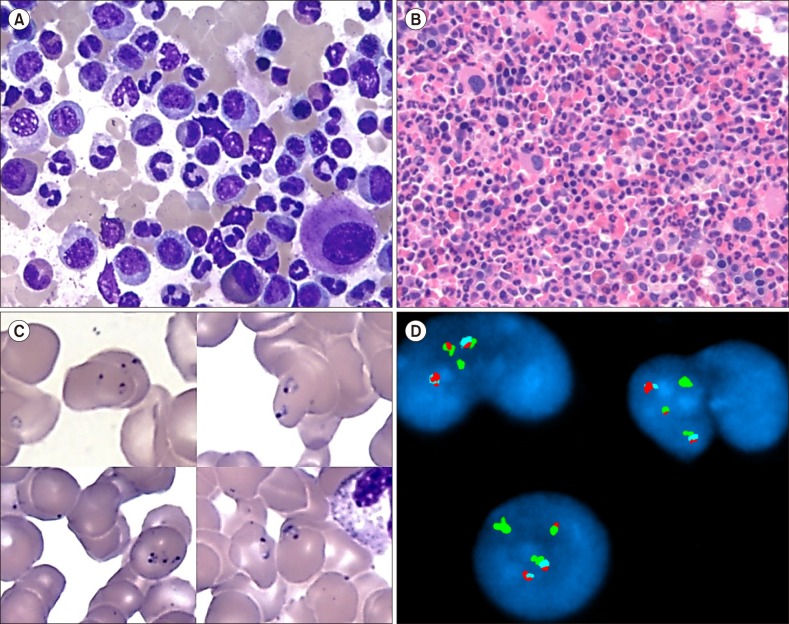Blood Res.
2018 Jun;53(2):163-166. 10.5045/br.2018.53.2.163.
The first concurrent diagnosis of acute symptomatic Babesiosis and chronic myeloid leukemia in a healthy young adult
- Affiliations
-
- 1Department of Laboratory Medicine, Cleveland Clinic, Cleveland, OH, USA. rogersj5@ccf.org
- 2Department of Translational Hematology and Oncology Research, Taussig Cancer Institute, Cleveland Clinic, Cleveland, OH, USA.
- 3Department of Pathology, Southern New Hampshire Medical Center, Nashua, NH, USA.
- KMID: 2451036
- DOI: http://doi.org/10.5045/br.2018.53.2.163
Abstract
- No abstract available.
MeSH Terms
Figure
Reference
-
1. Martinot M, Zadeh MM, Hansmann Y, et al. Babesiosis in immunocompetent patients, Europe. Emerg Infect Dis. 2011; 17:114–116. PMID: 21192869.
Article2. Vannier EG, Diuk-Wasser MA, Ben Mamoun C, Krause PJ. Babesiosis. Infect Dis Clin North Am. 2015; 29:357–370. PMID: 25999229.
Article3. Akel T, Mobarakai N. Hematologic manifestations of babesiosis. Ann Clin Microbiol Antimicrob. 2017; 16:6. PMID: 28202022.
Article4. Lubin AS, Snydman DR, Miller KB. Persistent babesiosis in a stem cell transplant recipient. Leuk Res. 2011; 35:e77–e78. PMID: 21185598.
Article5. Chiang E, Haller N. Babesiosis: an emerging infectious disease that can affect those who travel to the northeastern United States. Travel Med Infect Dis. 2011; 9:238–242. PMID: 21862413.
Article6. Yager PH, Luginbuhl LM, Dekker JP. Case records of the Massachusetts General Hospital. Case 6-2014. A 35-day-old boy with fever, vomiting, mottled skin, and severe anemia. N Engl J Med. 2014; 370:753–762. PMID: 24552323.7. de Ramón C, Cid J, Rodríguez-Tajes S, et al. Severe Severe Babesia microti infection in an American immunocompetent patient diagnosed in Spain. Transfus Apher Sci. 2016; 55:243–244. PMID: 27499182.8. Castagnetti F, Gugliotta G, Baccarani M, et al. Differences among young adults, adults and elderly chronic myeloid leukemia patients. Ann Oncol. 2015; 26:185–192. PMID: 25361995.
- Full Text Links
- Actions
-
Cited
- CITED
-
- Close
- Share
- Similar articles
-
- A Case of Acute Myeloid Leukemia Concurrent With Untreated Chronic Lymphocytic Leukemia
- Acute myeloid leukemia arising from chronic myelomonocytic leukemia during hypomethylating therapy
- Transient Spontaneous Remission in A Case with Acute Myeloid Leukemia
- Concurrent Leukemia Cutis and Sweet Syndrome in a Patient with Acute Myeloid Leukemia
- A Case of Leukemia Cutis in Myelodysplastic Syndrome Evolving into An Atypical Chronic Myeloid Leukemia


